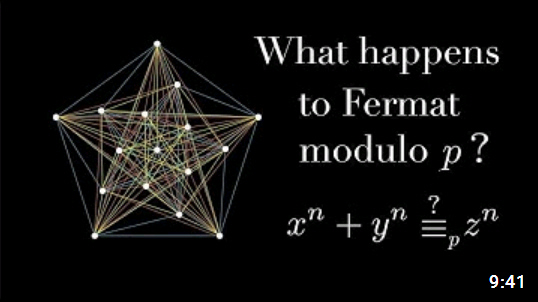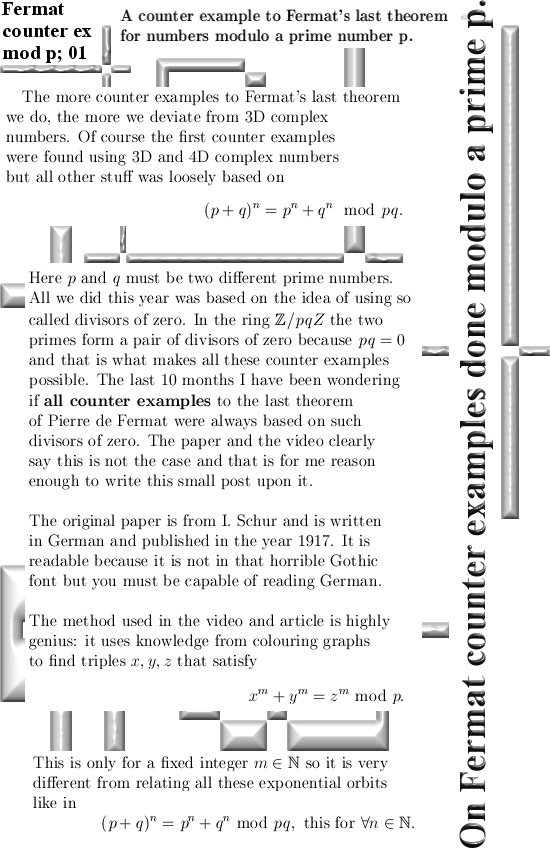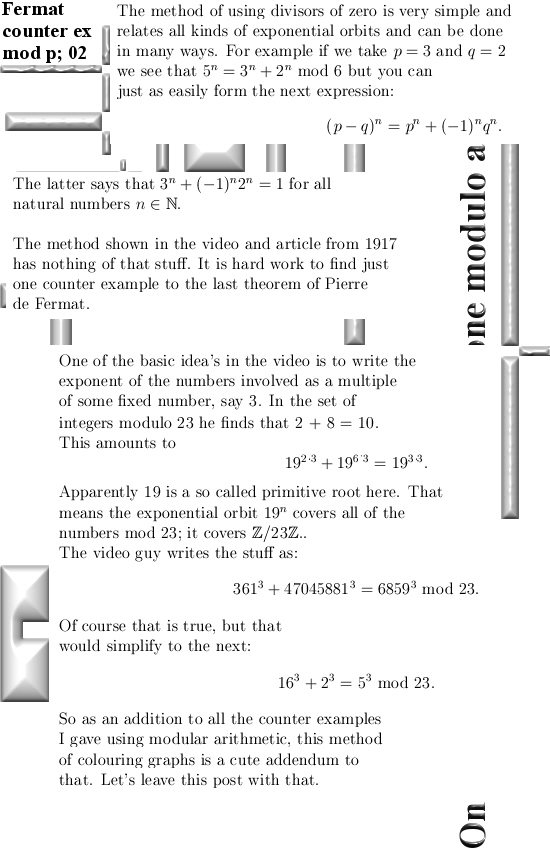This year in January I started finding more and more counter examples to the last theorem of Pierre de Fermat. I started in the space of 3D complex numbers using the so called divisors of zero you can find there. Rather soon after that I found those very easy to understand counter examples using modular arithmetic modulo N where N was the product of two prime numbers. Along the way I found out there is also a cute improvement to make to the so called little theorem of Fermat, that was one of the many cute results of this year. Simple example:
Take 107^2, the old little theorem of Fermat says you must take it modulo 2 and you get the number 1. With the improved little theorem you do not take it mod 2 but mod 2*107 or mod 214. And voila: 107^2 mod 214 = 107.
So the problem of the little theorem of Fermat with small exponents is more or less solved in this way. It was a cute result for sure…:)
Yet since January I have been wondering if all counter examples must use some form of divisors of zero. If so there would be a small possibility to strongly improve on the result from Andrew Wiles. The video below shows a counter example using only integers modulo a prime number p. Since those number spaces modulo p do not have divisors of zero, actually these spaces are fields, I can now say that it is not needed to have divisors of zero. So that is why I decided to include this video in this post: it saves me a lot of time and funny enough this result goes back to at least the year 1917.
Lately there are much more math video’s on the usual video channels and a lot of them have these beautiful animations. A significant part of those new video’s can be traced back to the work of the guy that runs the 3Blue1Brown channel who more or less started to craft those beautiful animations. Somewhere this summer or may be spring he called for the public to make their own math video’s and even I thought about it a short time. But I have no video editing software, I have zero experience in using such software, I have no microphone and the only video camere I have is my photo camera that I never use to make video. So I decided not to try and make a video about 3D complex numbers, it was just too much work.
Here is how the small picture from the video looks on Youtube, it looks cute but likely it takes a lot of time to make such animations:

Ok, back in the year 1917 a guy named I. Schur managed to find a counter example using the integers modulo a prime number. He himself in that old article cites another person so it is a bit vague how this all panned out. Anyway I do not have to be ashamed as not to find this result modulo p; it is based on the colorings of graphs like you see above. I do not know much about that so don’t blame me for missing these results. Besidew that, another cute result of this year was that I found out that my own 4D complex numbers form a field if you restrict them to the rational numbers. That simply disproves stupid but accepted theorems like the Hurwitz theorem that says that the only higher dimensional complex numbers are the quaternions and total garbage like the octonions. That whole fucking stupid theorem from Hurwitz is just not true and of course the mathematical community says nothing.
Anyway, the video is just 10 minutes of your time and my post is only two pictures long so have fun with it!


And now we go for the video:
The paper that was unpicked is written in German but don’t panic: It is not in that gothic font they used for a long time. You can find it here:
https://eudml.org/doc/145475.
So if you can read the German language you can try to unpick it for yourself… Ok, end of this post. Thanks for your attention.